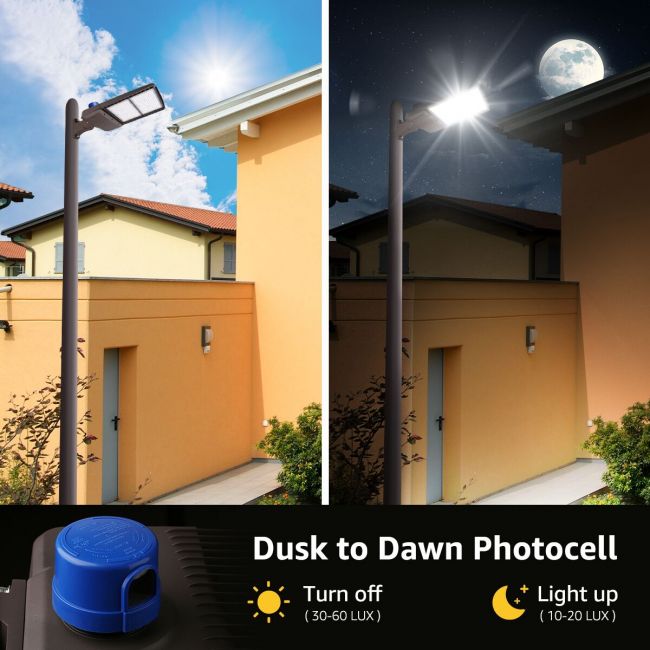Dusk-to-dawn lighting has had a tremendous impact on everybody’s life, which is why it’s essential to learn more about it. With additional information, you can decide if you should have your own dusk-to-dawn lightbulb.
Understanding the Workings of the Dusk-to-Dawn Sensors
Dusk-to-dawn lighting is a lightbulb that turns on when it detects a low level of light and switches off when it senses more light. When the sensor is installed in a wall light, lamp post or garden solar step light, it can eliminate the need for people to remember and turn on and off their outdoor lighting each day.
How does the sensor work? A sensor is generally built into a dusk-to-dawn light bulb. This photoelectric device can distinguish light and dark, sending a signal to let the bulb know when it’s time to turn on and off. There are two critical parts to photoelectric devices:
- Photo-voltaic cells
- Photo-conductive cells (the majority of desk-to-dawn light bulbs use this type of sensor)
The light-dependent resistor (LDR) declines and rises its resistance, attaining the dusk-to-dawn capability based on the light the sensitive surface receives. A dusk-to-dawn light bulb may only work correctly if no dust, particles, or objects are on the surface. It may also not work right if installed on a building that gets a lot of light at night. With a dusk to dawn light, you must ensure it’s located away from a light source.
There are several kinds of photocells on the market, but it’s important to understand that the technology of each one is similar. They all use semiconductors to regulate the electric current. If the semiconductor is exposed to a specific light level, the current will cause the light to turn off. You can find adjustable photocell sensors so that you can determine what level of light will cause the semiconductor to kick on. When it becomes dusky, the flow quits, and the light turns on.
Where Can a Dusk-to-Dawn Light Be Used
A dusk-to-dawn lightbulb is often installed in an outdoor light; no reason for it to be used inside. This kind of lightbulb sensor is ideal for most outdoor projects, so keep that in mind when making improvements to your area.
3 Kinds of Dusk-to-Dawn Light Fixtures to Consider
Dusk to Dawn Motion-Sensor Warning Light
Light can help illuminate an area, keeping you safe from danger and other hazards. If safety is a concern, the dusk-to-dawn motion sensor warning light should be the way to go. It has both a motion and light sensor, which means the light will turn on when the sun goes down and will start flashing red and blue light brightly when its motion sensor perceives a person is coming close to your home.
Dusk to Dawn Wall Pack Light
This kind of light uses photocells to turn the light on at sunset and shut off at sunrise. This helps stop energy from being wasted because the lights are still on after being forgotten all day.
Outdoor Parking Lot with Photocell Light
Many parking lot lights are installed with a dusk to dawn LED with photocell sensors built in. The sensor will detect when there is or is no light, sending out a signal to turn it on or off. When the sun sets, the light will come on. When dawn arrives, it will turn off. There is no switch to deal with; it’s all automatic.





